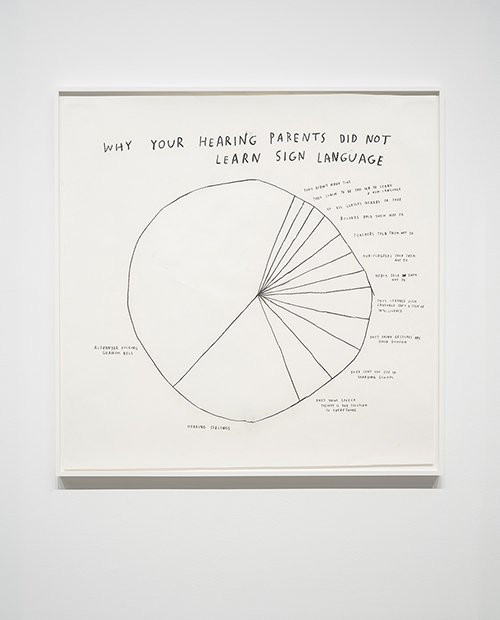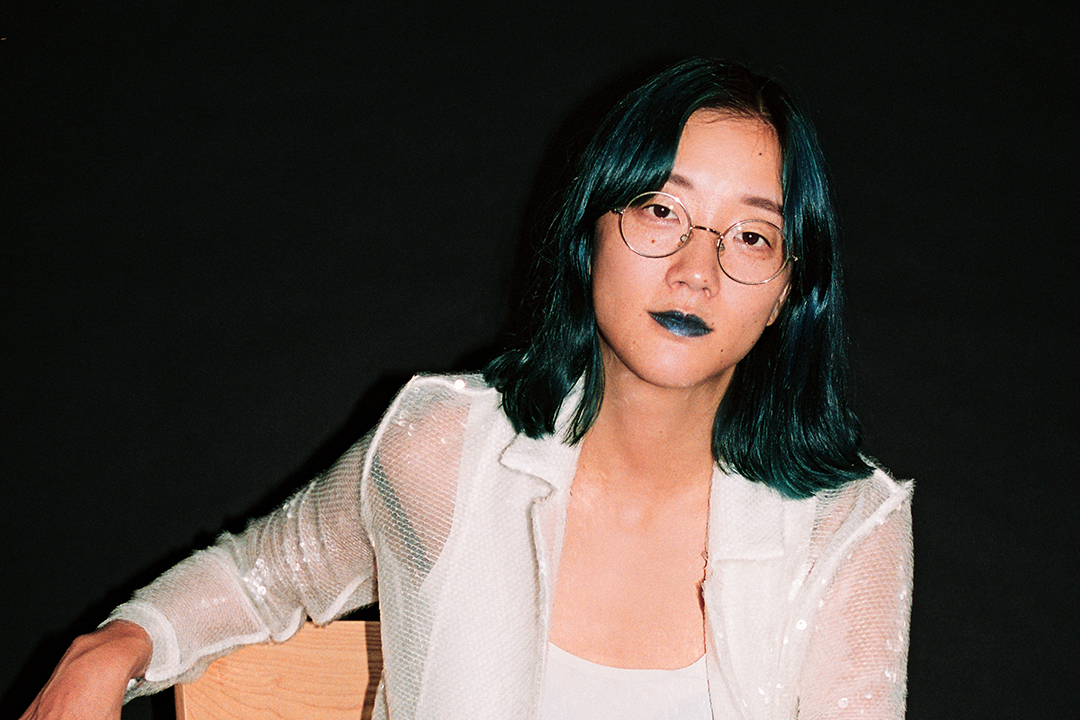Christine Sun Kim: From RIT/NTID alum to international artist
Lexi Sun
Christine Sun Kim.
Christine Sun Kim (’02), a Berlin, Germany-based sound artist who recently had two of her works purchased by the Smithsonian Museum of American Art and was recently awarded one of the first Disability Futures fellowships, characterizes herself as a bit of a “late bloomer.”
That may be putting it mildly.
Kim attended University High School, home to one of the largest deaf and hard-of-hearing mainstream programs in the United States. She recalls her years at RIT/NTID as “about developing my personal identity.”
Kim had her reasons for attending RIT/NTID as a member of the first entering class of the College of Imaging Arts and Sciences (now College of Art and Design)’s program in New Media Design.
Her older sister, also Deaf, attended California State University, Northridge (CSUN). Wanting to chart her own course while avoiding the additional complications involved in seeking accommodations as a deaf student, Kim chose RIT/NTID. RIT’s superior course offerings and art-related programs clinched it for her. “What I wasn’t prepared for at all,” says the Southern California native, “was the winter!”
RIT/NTID offered the added advantage of being similar to her previous academic experience. Mainstreamed full-time starting in the sixth grade, Kim graduated with more than 30 other deaf students in her class at University High School. She and her classmates attended school activities and sporting events together, and she views it as though “there was a deaf school within the high school,” a similar arrangement to NTID’s relationship with RIT.

Growing up, Kim doesn’t remember much encouragement to pursue art as a career option. Although she had art tutors and enjoyed drawing Biblical characters and scenes in church every Sunday, her education centered around science, math and languages. Still, the light peeked through from time to time.
“I remember this amazing Deaf papermaking teacher who visited my elementary school several times,” says Kim. “I don’t remember her name, unfortunately, but she left a huge impression on me.”
After her arrival at RIT/NTID, she recalls, she took several elective art classes in the evenings, which came with a small studio of her own. “I was totally enamored,” says Kim. She adds, “I had Marlene Elliott as my interpreter, and I absolutely loved working with her because she really showed me what the deal is about art.”
Kim’s desire to be an artist started early and never stopped, but she was wary at first. It wasn’t until she decided to wholly commit to art as her only career option that she was able to find the courage to push through. After graduating from RIT/NTID in 2002, she moved to New York City to capitalize on the art community there.
After two years of working in various jobs, she decided to pursue a Master of Fine Arts degree at the School of Visual Arts. That eventually won her a position as an educator at the Whitney Museum in New York City and as an archivist at W.W. Norton and Co., a publishing company. “I stayed at both jobs for years because I had great bosses,” she says. “The Whitney job also gave me access to American art history, and the Norton job let me grow my skills with organization and time management.”

It wasn’t until after Kim did a short residency in Berlin in 2008 that she began considering the use of sound as a medium, which in turn led her to Bard College in New York’s Hudson River Valley for a second MFA in Sound and Music, which she completed in 2013.
“Everything that happened in 2013 definitely pushed me this far,” says Kim. As a member of MoMA’s first sound-art show, video by acclaimed artist and filmmaker Todd Selby, and someone who returned to her old employer, the Whitney, not as an educator but as an artist in the museum’s prestigious Biennial in 2019, she muses, “How did I get so lucky?”
Though her op-eds were published in the New York Times and she was covered by Vogue, Kim nevertheless found herself humbled by the purchase of two of her works by the Smithsonian American Art Museum. “I was honestly surprised that they even considered my work, let alone two acquisitions!”
Current Shows
In Berlin:
Reading from Below
Studio Berlin
In New York:
We Fight to Build a Free World
100 Drawings from Now
In Brussels:
Hotel Beethoven
Billboards:
TED's Climate Countdown
For Freedoms
Kim's website and CV
Kim pauses to credit the team at the Ghebaly Gallery in Los Angeles for their hard work representing her. Thanks to them, she says, “My work is forever in the Smithsonian’s permanent collection. It’s such an honor to be recognized and be part of American history.”
Coming as it does during the Covid-19 pandemic, the news is a welcome surprise for Kim, whose schedule—and life in Berlin with her partner and their child—was affected by the pandemic. “I’m part of various group shows here and there,” she says of her current activities, and adds, “But I’m generally happier now that I fly much less these days.”
In light of Kim’s two-decade journey from RIT/NTID student to internationally acclaimed artist, her advice to young deaf artists is simple: Take care of yourself. “It’s okay to take a break or two if you can afford it,” says Kim. “The dual struggle of breaking through as an artist and as a deaf person can be exhausting. Be good to yourself.”





